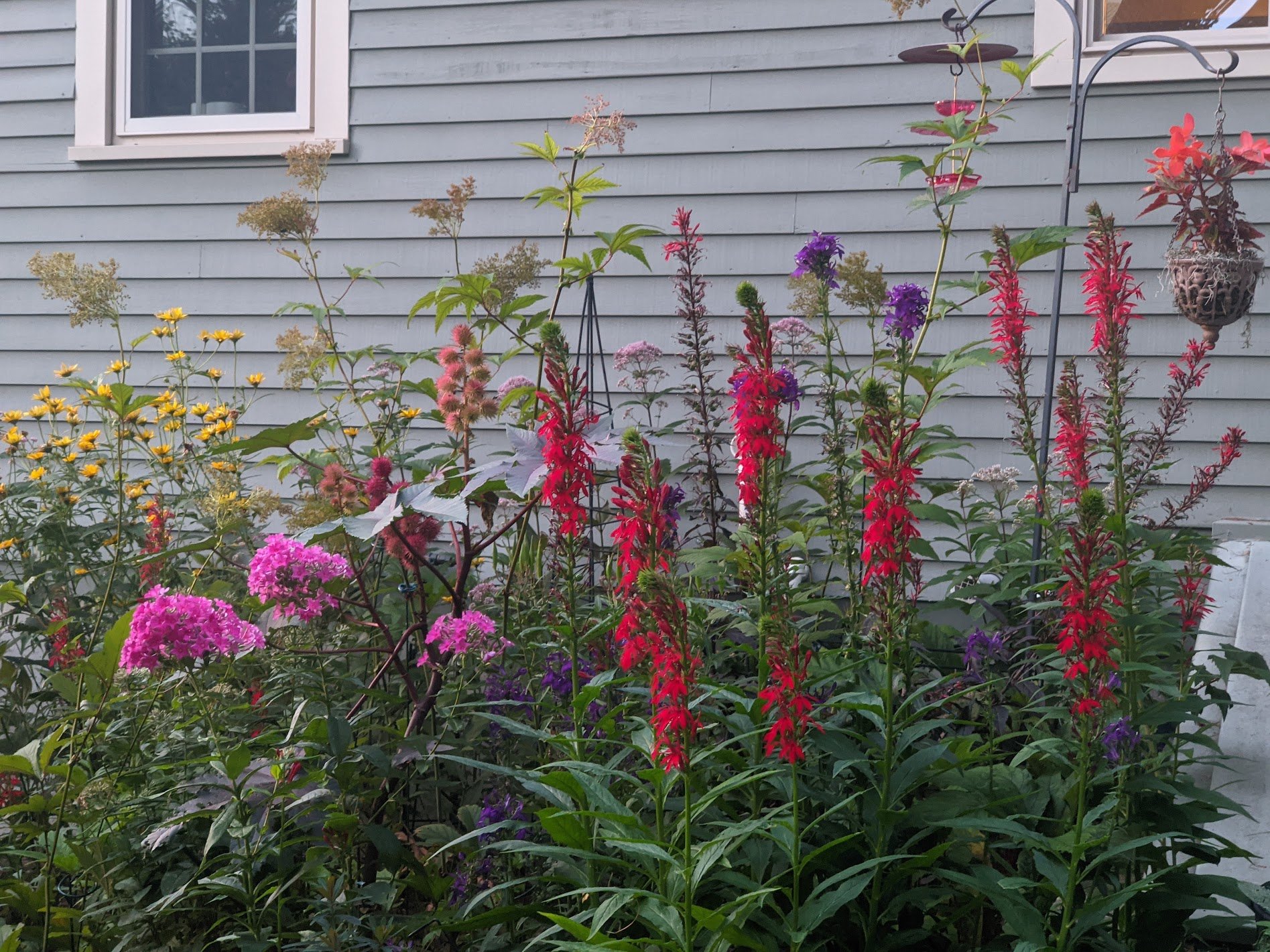Lobelia cardinalis, aka ‘Cardinal Flower’
Lobelia cardinalis is a native powerhouse when it comes to providing a natural source of nectar for our ruby-throat hummingbirds. Its stately red spikes rise above the garden, bursting into color around early August here in southern NH. The species plant happily reseeds around the sunny garden bed, reliably adding even more beauty and sustenance for our little birds. Volunteers are easily removed and/or relocated elsewhere or shared with a friend!
Designing with lobelia cardinalis:
While there are showier cultivars like ‘Black Truffle’ lobelia, I have come to prefer the straight species (shown above). The native species more reliably survive our Zone 5b climate and they are less floppy than some of the cultivars.
Cardinal flower adds both color and verticality to the garden design and is enhanced when planted in proximity to white blooming plants like the billowy calamint ‘White Cloud’. Be sure to plant it where you can sit back and enjoy the hummingbirds feasting and fighting over its scarlet blooms. (see my view out the kitchen window below)
important host plant for our native species:
In addition to being stunningly beautiful and a hummingbird magnet, lobelia cardinalis (the straight species) is an important host plant for many native butterflies and moths, including the spicebush swallowtail, and others (see links to the right). Research by Mt. Cuba and others has found that straight species are more attractive to pollinators for food and as larval hosts than those that have been bred for colorful foliage, like Black Truffle.
lobelia cardinalis:
Plant type: New England native perennial
Growing Zone: 3-9
Growing Conditions: full to part sun; prefers consistent moisture; suitable for a rain garden
Size: 24-36” tall and 12-15” wide after two years
Spread: Plants will reseed but are not invasive and seedlings transplant easily
Bloom: late July into September
Foliage: persists into November
Maintenance: none, leave dried flower heads for fall and winter interest
Biodiversity: bees, butterflies, moths, hummingbirds
Host Plant: Spicebush Swallowtail, Pink Washed Looper Moth, Greater Black Letter Dart and Red Banded Leafroller Moth
Deer & Rabbit resistant
Pairings: calamint, cranesbill geranium, native grasses
Location: front to middle of border for best access and viewing of hummingbird feeding activity








